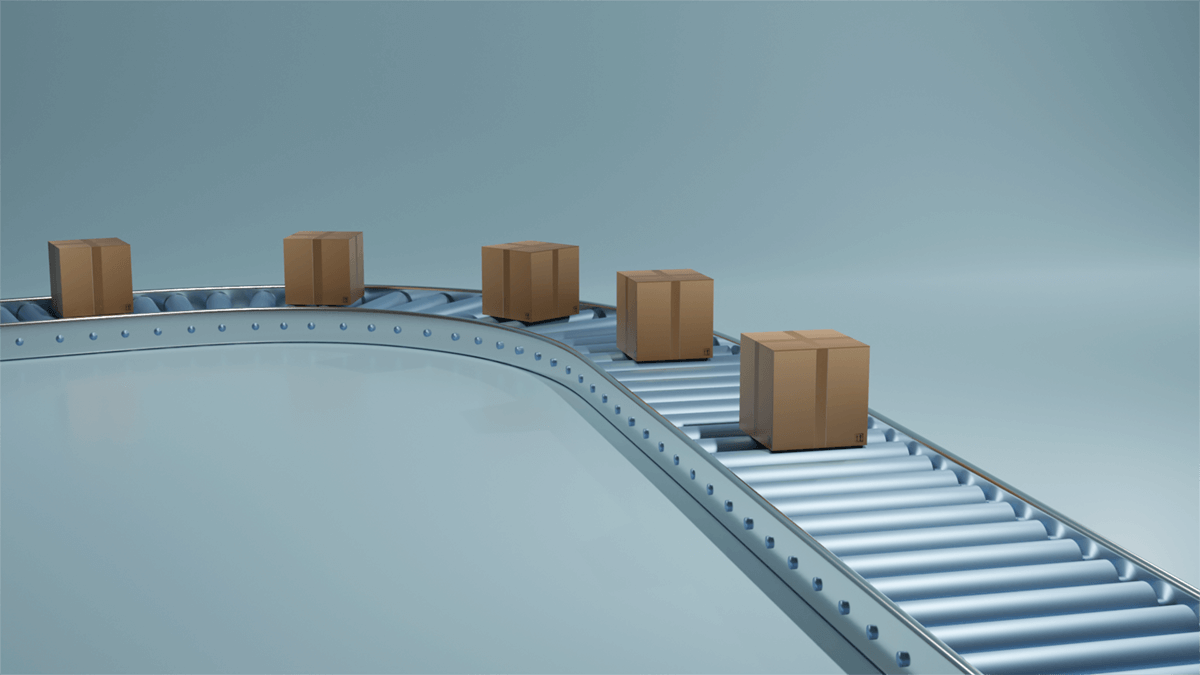How to Reduce Costs Involved in Shipping and Fulfilment

Businesses go to great lengths to ensure customer satisfaction, but in doing so, the shipping process can be overwhelming for many. Nevertheless, with some foresight and methods to create a well-defined shipping strategy, it ceases to seem daunting.
Your shipping and fulfilment procedures must be in order since this is the stage at which your customer can experience your product in person. Furthermore, it represents a significant portion of your business expenses, depending on your shipping strategy.
This article will cover the basics of shipping strategy, product packaging, insurance, choosing the suitable fulfilment methods and warehouse for your business.
Table of Contents
Shipping Strategy: Everything You Need to Know
Here are the critical steps that comprise your high-level shipping strategy.
Your shipping rates and methods
Would you charge your customers the total shipping cost, or would you offer free or flat-rate shipping? How are you going to get local customers to order from you? Will you be able to provide your customers with completely free shipping?
This decision depends on how much you are willing to spend on the shipping section. Using flat-rate shipping is a great way to reduce your shipping rates, and Flat-rate shipping reduces variable costs by converting them into fixed costs.
For example, if you plan on shipping five items within a specific weight range, you will have an idea of how much it will cost beforehand.
Product weights
When shipping eCommerce orders, measure and update the weight of each item. Later, you can use this data to get a clear picture of your total costs and pass along accurate pricing to your customers.
Weighing a product before shipping is important because you have to mention the product weight on the packaging. In the absence of a weight value, the weight will be set at 0.1 lb by default, and the shipping costs may be inaccurate as a result.
Choose your preferred packaging
Research and figure out what type of packaging is best for your products. Once you’ve decided on the package type, you can use this information to calculate accurate shipping prices.
If you want to reduce the shipping costs on orders, you will have to reduce the weight of packages by choosing the right-sized packaging.
The thumb rule to follow when it comes to packaging your product is to treat it the same way you would treat yourself. Just like you wouldn’t want to live in an oversized or undersized home, choosing the appropriate space for the right package is crucial.
Package presentation is the key point
Your shipping box is an excellent way to promote your company. Don’t pass up this incredible marketing opportunity. Your box design must be aesthetic, unique and memorable because, in a way, your box represents your brand, and it’s an essential part of your overall brand experience.
So, make your packaging stand out by using bright colours and easily recognisable fonts. If your budget allows, you can have your company’s logo or slogan printed directly on the box.
Branding can be costly, especially if you only need a few boxes, so it may not suit every business. Pricing for custom boxes typically decreases as your needs and order sizes grow.
Look for pre-made packages
This option does not allow for complete customisation, but it is less expensive. If funds are limited, you may not be able to go all-out with a custom-coloured box decorated with your logo on all sides.
But don’t worry; you can still make a good impression and capitalise on this crucial component of your marketing arsenal. Your name can be front and centre with a simple logo sticker, a stamp, or custom packaging tape.
Insurance and tracking
The benefit of shipping insurance and tracking is that it can provide security, depending on what you’re selling and its value. Both features are relatively inexpensive with most eCommerce shipping companies and provide you with recourse if one of your packages is lost or damaged.
Consider purchasing insurance on large-ticket items so that you are covered in the unlikely event that a package is lost. Keep in mind that some shipping services include insurance in the price, so concentrate when comparing courier prices.
Customs declaration and forms
If you’re shipping outside the country your business is located in; you’ll need to include the necessary customs documentation. These forms inform customs officers in the ‘country of import’ about the contents of the package, how much it costs, and whether it is a gift or merchandise.
Check with your postal service to determine which forms you’ll need to include with your package. You must fill out these forms completely and accurately to avoid your package getting held up in Customs.
Tariffs, taxes and duties
If any additional customs fees are pending when a package arrives at its destination, your customer will be responsible for it at the time of delivery.
You should be aware of this fact, include it on your shipping policy page, and convey it through the mail so that unexpected fees don’t catch customers off guard. Not conveying the message to your customers beforehand can upset them, and they might decide not to shop with you anymore.
Labelling your packages
After you’ve decided on your presentation, packaging, return policy, costs, etcetera, you’ll need to figure out how you’ll label your packages. Many newbie eCommerce entrepreneurs begin by handwriting the ship-to and return addresses on the box.
Although this is an excellent place to start, it is time-consuming, tedious, and not scalable as your company grows.
Here’s how it works.
- Select all of the orders you’re ready to ship from your orders list.
- Examine each shipment for the carrier, shipping service, and package and fill in any missing information.
- Purchase all of your shipping labels with a single click and print them as a single PDF.
- You can print your labels on plain paper or upgrade to a thermal label printer to print directly on self-stick labels to save even more time.
Choosing the Right Fulfilment Method for Your Business
Inhouse Fulfilment
In-house fulfilment, or self-fulfilment, is most beneficial to small and new companies. Essentially, the e-commerce company is responsible for every aspect of the fulfilment process. No third parties get involved, from taking an order to picking, packing, and delivering it.
Therefore, it is ideal for home sellers, small e-commerce businesses, and companies with large enough teams to handle high volumes of orders.
The main advantages are that you have complete control over all aspects, know your inventory and what is happening with orders, and see where challenges and opportunities exist.
Everything takes place under one roof, except for the delivery procedure, which involves finding the best parcel delivery companies. The process can be cost-effective if your staff handles all aspects since only shipping or parcel delivery requires payment.
Even though it may save you money, it will take up a large chunk of your workforce’s time. Specifically, if orders increase, you will spend more time fulfilling orders and less on marketing, developing new products, etcetera.
Drop-shipping
E-commerce fulfilment is much simpler when you use a drop-shipper. This method involves sourcing your products from a supplier and promoting them on your eCommerce site.
Online marketing, customer service, and social media will continue to be your responsibilities. On the other hand, drop-shipping partners handle the picking, packing, and delivery of parcels.
Furthermore, since you are not manufacturing the products, you can test them and collaborate with various suppliers to see what works best for your product. Overheads, such as inventory and warehousing, do not exist.
Downside? Due to the fact that you’re entrusting your brand’s reputation to the drop-shipper, you have less control over that part of the process. Your company will be to blame if there is a problem with a product or service.
In addition, the product supply is in their hands, so if something runs out, they will need some time to replenish it. Also, your branding will be absent, making it more difficult to establish a distinct brand in the market.
Outsourced/Third Party Fulfilment
Drop-shipping and self-fulfilment are both examples of outsourcing. As with self-fulfilment, you buy or produce your product, store it in your facility, market it online through an eCommerce website, and receive customer orders.
A third party will handle everything from picking to packing to shipping and delivery.
In addition, this frees up time for your employees to focus on marketing, product development, and other aspects of business growth.
You can outsource the picking, packaging, and shipping separately to make it versatile. You can obtain discounts by purchasing bulk services such as inventory management and shipping.
Partnering up with a fulfilment warehouse
When you work with a fulfilment warehouse, your inventory will be stored at one of their warehouses. Fulfilment services and warehouses can also help you automate and manage your shipping.
Your fulfilment partner will automatically be alerted about the order when an order comes in. They will then pick, pack, and ship the purchased order on your behalf, depending on their level of integration with your shopping cart.
There are several benefits to using a fulfilment warehouse, including:
Lower shipping costs
Fulfilment warehouses benefit from lower shipping rates because they ship in large quantities for multiple vendors. They usually have an eCommerce shipping integration capability with all significant shipping logistics and 3PL companies, allowing you to have easier access to the most expansive range of shipping options.
Reduce shipping time
Identify and choose a strategic fulfilment partner and the warehouse where your inventory will be stored.
Pick a fulfilment partner who is near the location where you get most orders. You will be able to keep your inventory close to most of your customers.
It is important to note that fulfilment warehouses are not suited to all business types, and they have several disadvantages as well.
Experience with the brands
Use your packaging presentation as part of your branding experience. You’ll have difficulty finding a fulfilment warehouse that will work with that level of dedication and customisation for your brand.
Ensure that you are on their priority list.
Additional expenses
While working with a fulfilment partner will most likely result in lower shipping costs, additional fees may include pick-up and packing charges and warehouse storage fees.
Thoroughly read the fine print and choose the best option for your needs based on volume. These fees may be calculated by order or by a monthly fee.
Here are some of the fulfilment warehouses you can partner up with.
Key Takeaways
As discussed above, it can be challenging to reduce the costs involved in shipping and fulfilment. There will be unique challenges to overcome for every business to develop the most efficient and effective eCommerce shipping solutions.
As with many aspects of building a new eCommerce site, it will take time to find out what works best.
Based on the information above, you can make appropriate decisions regarding shipping and fulfilment costs.



